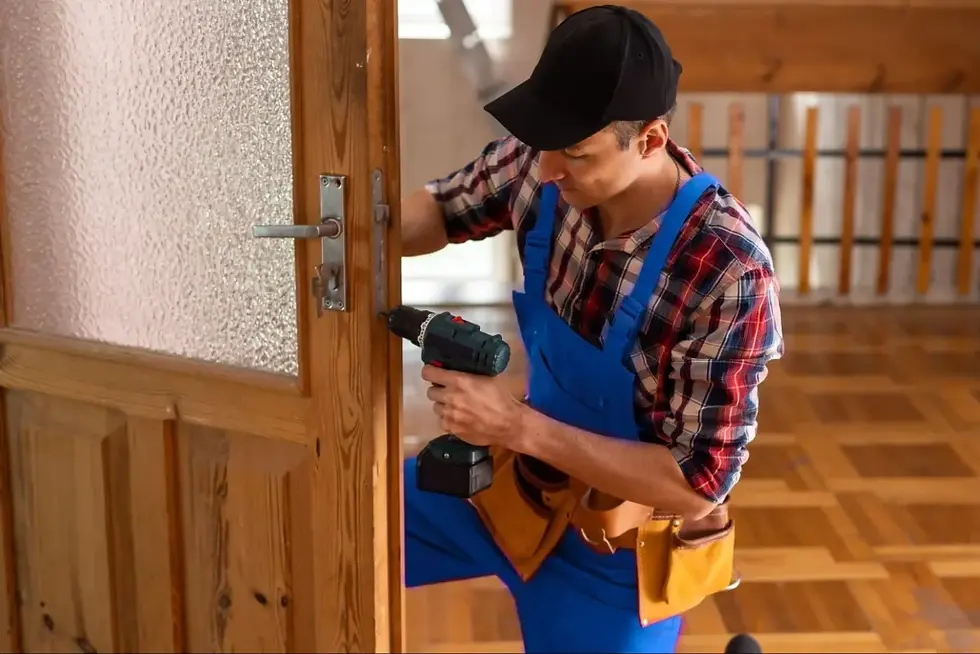How to Start a Handyman Contractor Business
- Nate Jones, CPCU, ARM, CLCS, AU

- Sep 18
- 3 min read
Starting a handyman contractor business is a smart way to turn your skills into a profitable venture. Whether you specialize in plumbing, painting, carpentry, or general home repairs, the demand for reliable handyman services continues to grow across residential and commercial markets.

At Wexford Insurance, we help handyman contractors protect their businesses with tailored insurance solutions. If you're ready to launch your handyman business, this guide outlines the key steps to get started—and how to stay protected as you grow.
Step 1: Define Your Services
Start by identifying the types of handyman services you’ll offer. This helps you target the right clients and invest in the right tools. Common handyman services include:
Plumbing
Bathroom and kitchen remodeling
Home repair and maintenance
Window and door services
Floor installation and repair
Interior and exterior painting
Carpentry
For a deeper look at service trends and demand, explore the National Association of Home Builders (NAHB) for insights into remodeling and repair markets.
Step 2: Register Your Business
Choose a business name and register it with your local or state government. You may need to:
Apply for a business license
Register for taxes
Get an Employer Identification Number (EIN) if hiring employees
The U.S. Small Business Administration (SBA) offers a helpful step-by-step guide to registering your business.
Step 3: Create a Business Plan
A solid business plan helps you stay focused and organized. It should include:
Your service offerings
Target market and ideal customer
Startup costs and pricing strategy
Marketing and sales plan
Financial projections
Insurance needs
Step 4: Buy Essential Tools and Equipment
Invest in high-quality tools based on your service offerings. Common handyman tools include:
Power drills, saws, and sanders
Plumbing wrenches and pipe cutters
Paint rollers, brushes, and sprayers
Measuring tools and levels
Safety gear (gloves, goggles, boots)
Tool storage and transportation racks
Step 5: Set Your Pricing Structure
Decide whether you'll charge hourly, per project, or offer flat-rate packages. Consider:
Labor time
Material costs
Travel expenses
Overhead and insurance premiums
Use online pricing calculators or competitor research to stay competitive.
Step 6: Market Your Business
Build a strong online presence to attract clients:
Create a website with service pages and contact forms
List your business on Google Business Profile, and Yelp
Use social media to showcase before-and-after photos
Run local ads or offer referral discounts
These platforms help you get found by local customers searching for handyman services.
Market Your Handyman Contractor Business
Marketing your handyman business takes consistent effort—especially when you're busy juggling repairs, client calls, and scheduling. Contractor Back Office helps you stay on track by managing the behind-the-scenes tasks that grow your visibility and brand while you focus on delivering great service.
Our Services Include:
Keep your finances organized and up to date with professional bookkeeping support.
Showcase your handyman services, customer reviews, and project photos to attract new clients.
Stay active online with engaging content that builds trust and connects with your local community.
Step 7: Deliver Quality and Build Reputation
Customer satisfaction drives repeat business and referrals. Always:
Communicate clearly
Show up on time
Clean up after jobs
Ask for reviews and testimonials
Step 8: Get the Right Insurance
Insurance is critical for protecting your business from liability, property damage, and jobsite injuries. At Wexford Insurance, we help handyman contractors find coverage that fits their specific services and risk profile.
Recommended Insurance Policies for Handyman Contractors:
General Liability Insurance – Covers property damage and bodily injury claims.
Commercial Auto Insurance – Protects vehicles used for transporting tools and materials.
Commercial Property Insurance – Covers your office, workshop, or storage space.
Equipment Insurance – Protects your tools and gear from theft or damage.
Workers Compensation Insurance – Required if you have employees.
Learn more about handyman contractor insurance and how we can help you get covered.
Final Thoughts
Starting a handyman contractor business is a rewarding path for skilled professionals who want flexibility, independence, and growth. With the right tools, strategy, and insurance, you can build a business that thrives in both residential and commercial markets.
Ready to start your handyman business and need insurance?
Contact Wexford Insurance today. We specialize in handyman contractor insurance and can help you get the coverage you need to operate with confidence.





